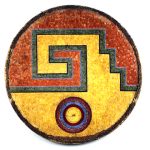In the creation of my maps, storytelling and image collecting I am utilizing the primary sources of the events. None of these documents are new, and they have been reviewed and read by every professional and amateur historian on earth. I hope to pull from them a humanity, and vividness that has perhaps eluded the modern digital world thus far.
Primary European Sources
Five men who were present on the expedition to Tenochtitlan wrote about it. Cortes, Bernal Diaz, Andres de Tapia, Bernardino Velazquez de Tapia, Francisco de Aguilar and possibly the “anonymous conquistador.”
The Conquest of New Spain, by Bernal Díaz
Bernal Díaz was a conquistador who was central to the events of the Fall of Tenochtitlan. He wrote many years after the conquest, when he was an old man. He was, in a sense, correcting and retelling the documented version of Gómara’s Life of the Conqueror. In several places he corrects Gómara by name.
Five Letters of Hernan Cortés to the Emperor, by Hernán Cortés
Cortés wrote several documents to Charles V, King of Spain and Emperor of the Holy Roman Empire. They are spun in his direction, naturally, but provide the most direct, real-time observations of the events. His writing is a march, not a chance to smell the Aztec roses. Technically only four of Cortes’s letters to the kind survive, the “first letter” is a group letter written by various men present at Veracuz.
Relación de algunas cosas de la Nueva España, y de la gran ciudad de Temestitán México; escrita por un compañero de Hernán Cortés. by anonymous conquistador
This anonymous telling of the exploration of Mexico by the Cortes expedition is short and written like a guide to the New World. The anonymous author writes on subject like “The Animals” and men’s clothing. This is presumably a first-hand account.
Relacion hecha por el Senor Andres de Tapia, sobre la conquista de Mexico. by Andres de Tapia
Written by Andres de Tapia, a conquistador who was on the expedition with Cortes, it is a rough telling of the full expedition to New Spain and Tenochtitlan. It’s possible this version was the foundational document for Gomara and Bernal Diaz’s versions. This is a first-hand account of the conquest, one of four written by men who were on the expedition (Cortes, Diaz, anonymous conquistador an de Tapia).
Relación breve de la conquista de la Nueva España by Francisco de Aguilar
Francisco de Aguilar was a soldier on the Grijalva and Cortes expeditions to the New World. After the Conquest of Mexico Aguilar joined the church and spent the rest of his life as a man of the cloth. By the time he wrote his account, Relación breve de la conquista de la Nueva España, he was supposedly in his 80s.
Relación de méritos y servicios del conquistador Bernardino Vázquez de Tapia by Bernardino Vázquez de Tapia
Bernardino Vazquez de Tapia was a conquistador who accompanied Hernan Cortes to Tenochtitlan where he participated in the conquest. He wrote his version of events later in his life and may have been influenced by earlier editions. What’s unique about his account is he was sent to Texcoco, and accounts for this trip in his narrative. His brief mention of the Cholula Massacre seems to hint at his shame in participating. The style he writes in matches that of Andres de Tapia, Cortes and Aguilar, narrratives written to illustrate their heroic acts.
Indigenous Documents
There are many codices from across Mexico, many are written after the conquest with heavy Spanish influence. It is not always so simple as calling something created in an Indigenous format, as expressly indigenous. With all these codices, knowing the writers is important for understanding the story being told.
Codex Boturini, unknown author, 1530 and 1541?
The Codex Boturini details the Mexica people’s journey from Aztlan to the Valley of Mexico.
Codex Mendoza, multiple/unknown artists, created between 1529 and 1553, perhaps ca. 1541
The Codex Mendoza details histories of the Aztec rulers, tributes and other aspects of life in Mexico. Was possibly created for Charles V.
Florentine Codex, by Benardino Sahagun
Sahagun, with the help of Indigenous scribes, documented a large amount of history and culture in a multi-volume codex.
Subsequent Retellings
De rebus gestis Ferdinandi Cortesii, Vida de Hernan Cortes
This anonymous Latin telling captures the life of Hernan Cortes.
Cortés: The Life of the Conqueror; by his Secretary, Francisco Lopez de Gómara
Gómara documented the story of the conquest after the events, having never been to the Americas. He is generally perceived as being pro-Cortés, to the extent of hero worship.
The Broken Spears, Miguel León-Portilla
Interpreted through the author, The Broken Spears brings the Indigenous version of the Conquest to life. Taken from original historic documents like the Florentine Codex and other “Indigenous” accounts, this book sheds a different light on the conquest than the European accounts.

